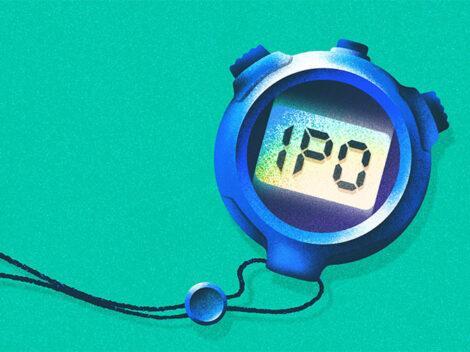Earlier today, Crunchbase News asked a number of questions regarding the future of Uber under the direction of its new CEO Dara Khosrowshahi.
Follow Crunchbase News on Twitter & Facebook
We were curious about the company’s financial pulse: it’s expenses, losses, and revenue growth. The numbers are intertwined. Uber could grow its revenue more quickly with higher spend, but that effort could exacerbate its unprofitability. So the question becomes how does Uber balance revenue growth that will defend its revenue multiple while crafting a credible path to profitability.
This afternoon, Khosrowshahi stated that Uber will likely pursue an IPO in the short-to-medium term, something that answers a number of our questions regarding the richly-valued private company.
According to a report from the Wall Street Journal covering Khosrowshahi’s first company-wide meeting as Uber’s CEO, the executive “said the ride-hailing company could go public in as soon as 18 months.” The report continues, adding that “[The CEO] set a timeline for an IPO between 18 and 36 months, though he indicated that wasn’t a firm deadline[.]”
Bloomberg, also citing sources, noted the same timeframe this afternoon:
In response to a question about going public, he said it would probably happen in 18 to 36 months, according to two people who listened to the meeting. “It’s my opinion that the company should go public,” he said.
Hot damn.
Returning to our questions from the morning, let’s answer a few as best we can with the news under our belt:
Does Uber curtail its more exotic programs to limit cash burn to help the firm chart a path to profits that public investors could find credible?
If the company intends to go public in just 18 months, or 6 quarters, the answer seems to lean yes. At twice the time—36 months instead of 18 and 12 quarters instead of 6Uber would have more time to grow its revenue and gross profit sufficiently to afford “exotic” efforts that have garnered the company a host of positive coverage.
Does Uber pursue another private round of capital–or several– or does Khosrowshahi push the firm to a material liquidity event?
It wouldn’t be a surprise to see Uber pick up another check even if it pursues the 18-month timeframe. If it takes longer, more checks. But not more than a few it seems reasonable to say.
Does Uber make real progress on course-correcting its culture, or does the firm under Khosrowshahi put other efforts first?
This already feels different.
The Uber IPO is critical for a host of investors both domestic and foreign as billions are tied up in the company. Past the borders of investor return, the company’s public debut will set the narrative for a number of other heavily-funded private companies valued at $1 billion or more. These so-called unicorns will need to eventually create liquidity for their own investors.
If Uber’s IPO stumbles, it could cause slow unicorn liquidity. If it doesn’t, the firm could help keep the IPO window open.
Uber lost a heavily adjusted $645 million in the second quarter of this year off adjusted net revenue of $1.75 billion. That puts its adjusted net margin at around -36 percent. That’s an improvement from -47 percent in the first quarter. If Uber can keep that sort of improvement up, perhaps the 18 month window isn’t as mad as you felt it was when you first read the news.

Stay up to date with recent funding rounds, acquisitions, and more with the Crunchbase Daily.





![Illustration of AI/Human teamwork. [Dom Guzman]](https://news.crunchbase.com/wp-content/uploads/AI-cowork-470x352.jpg)
![Illustration of a guy watering plants with a blocked hose - Global [Dom Guzman]](https://news.crunchbase.com/wp-content/uploads/quarterly-global-3-300x168.jpg)
67.1K Followers